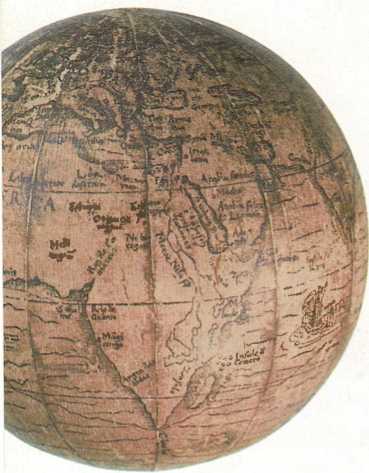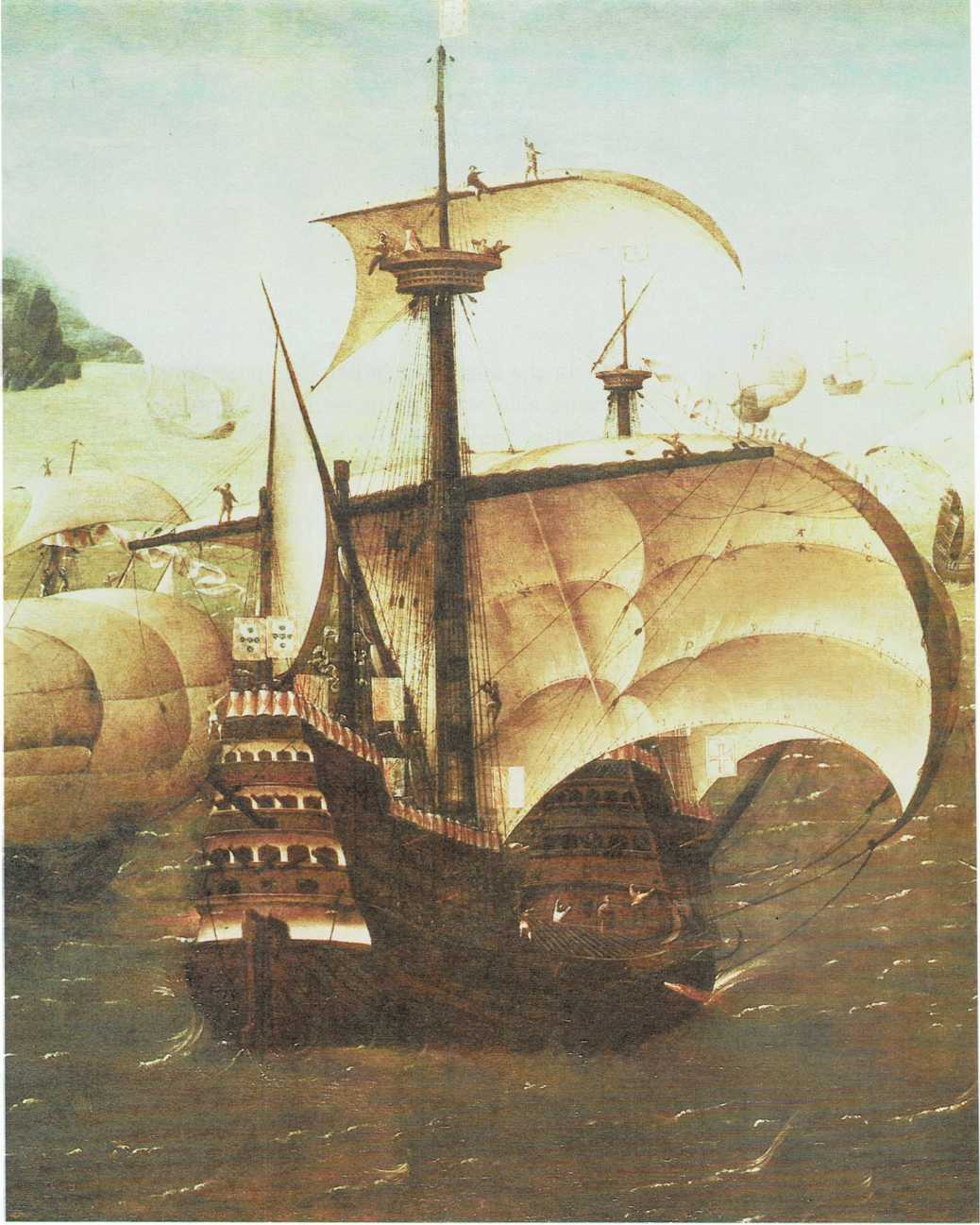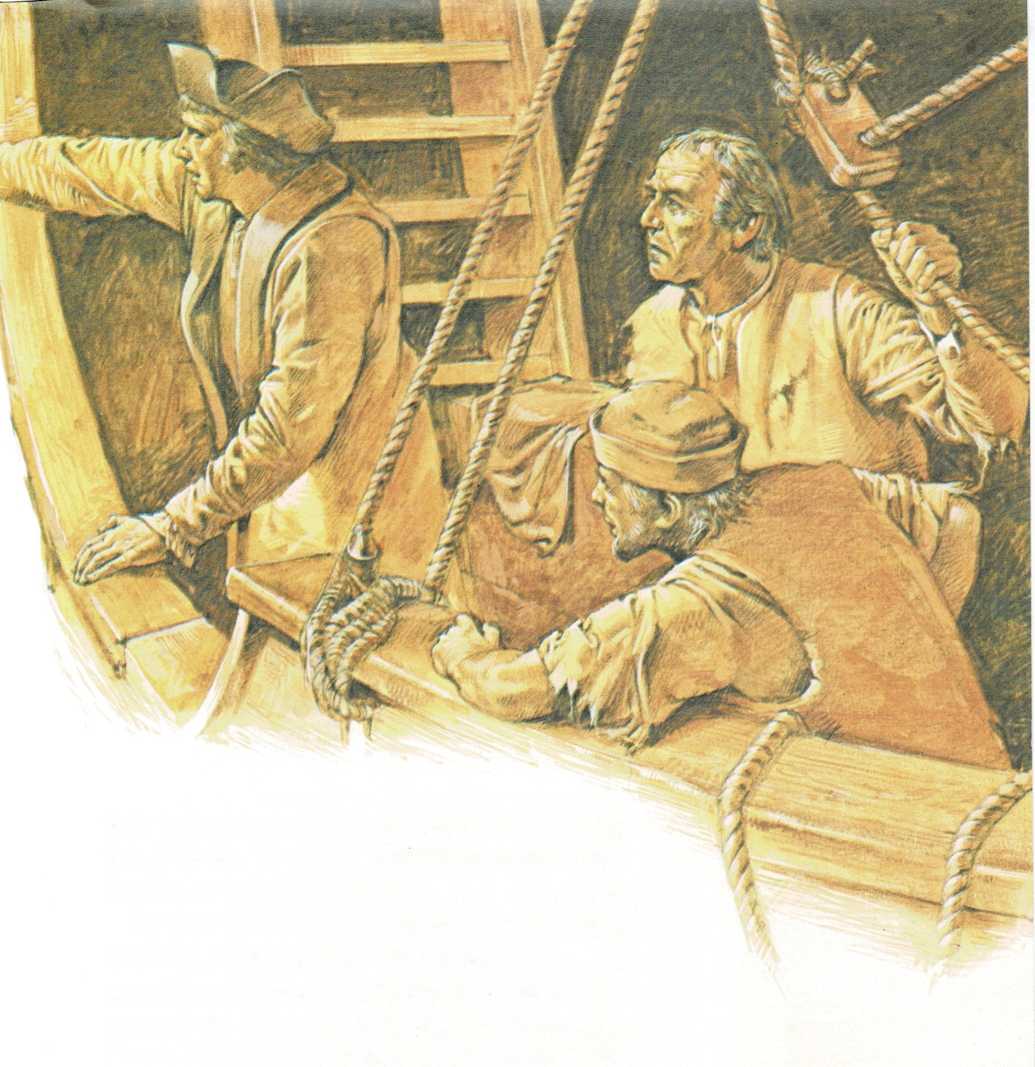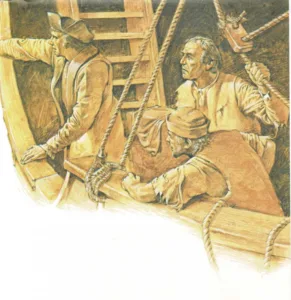
early globe, made about 1525
The age of exploration
About five hundred years ago, sailors from different parts of Europe
began to make voyages of exploration. At first, they made short trips
south, along the coast of Africa. But they were afraid to go very far.
Many sailors believed that there were huge, horrible monsters in these
unknown waters. And they thought that the sea far to the south was so
hot it boiled!
The first Europeans to make these voyages were from the country of
Portugal. They were sent forth by a Portuguese prince, known as Henry
the Navigator. Henry was not a sailor, but he dreamed of making Portugal
a great power. He intended to do this by sending expeditions to find new
lands and treasures. His dream came true!
Sailors on Henry’s ships discovered new islands in the Atlantic. They
also landed at many places on the coast of Africa. They brought back
gold and other valuable things.
Henry died in 1460, but Portuguese ships continued to explore southward
into the Atlantic. Each successful voyage gave the sailors the courage
to go farther the next time. In 1484, a Portuguese ship reached the
equator before turning back. Then, in 1488, three Portuguese ships under
the command of Bartolomeu Dias became the first to go around the
southern tip of Africa. Dias named it the Cape of Good Hope, because it
gave them hope of sailing around Africa to India. Just ten years later,
in 1498, another Portuguese sailor, Vasco da Gama, did sail around
Africa and all the way to India.

a Portuguese ship of Magellan’s time

In the meantime, other European countries were also sending out men and
ships to explore the world. One of these men was an Italian from Genoa,
Italy, Christopher Columbus. Columbus sailed for the king and queen of
Spain. He hoped to reach the Indies—by which he meant India, China,
the East Indies and Japan—by sailing west across the Atlantic.
Instead, he found a new world—America—in 1492.
John Cabot, also from Genoa, Italy, sailed in the service of England.
He, too, hoped to reach the Indies by sailing west. Instead, he landed
in North America in 1497.
Another man who thought he could find a western passage to India was
Ferdinand Magellan. Although he was Portuguese, he found no support for
his plan in Portugal. The Portuguese were content with the route around
Africa. But Magellan did convince the king of Spain that his plan was a
good one. The only reason no one had reached India by sailing west,
Magellan said, was that they had not gone far enough south.
On September 20, 1519, Magellan left Spain with a fleet of five ships
and about 240 men. Thirteen months later, they rounded South America
through the stormy passage now called the Strait of Magellan. The new
ocean

they entered seemed very calm compared to the Atlantic. And so, Magellan
named it the Pacific, or peaceful, Ocean.
By now the fleet was down to three ships. One had been wrecked and
another had secretly sailed back to Spain. But Magellan pressed on. They
reached the Philippines in March 1521. Here, Magellan was killed while
helping in a war between two groups of Filipinos.
Finally, on September 6, 1522, one ship, the Victoria, commanded by
Juan Sebastian del Cano, reached Spain with only eighteen men. They had
been gone almost three years. They had not set out to do so, but they
were the first to sail around the world.
These are a few of the many instruments sailors have used through the
years to find their way while at sea. One of the astrolabes is more than
seven hundred years old.

